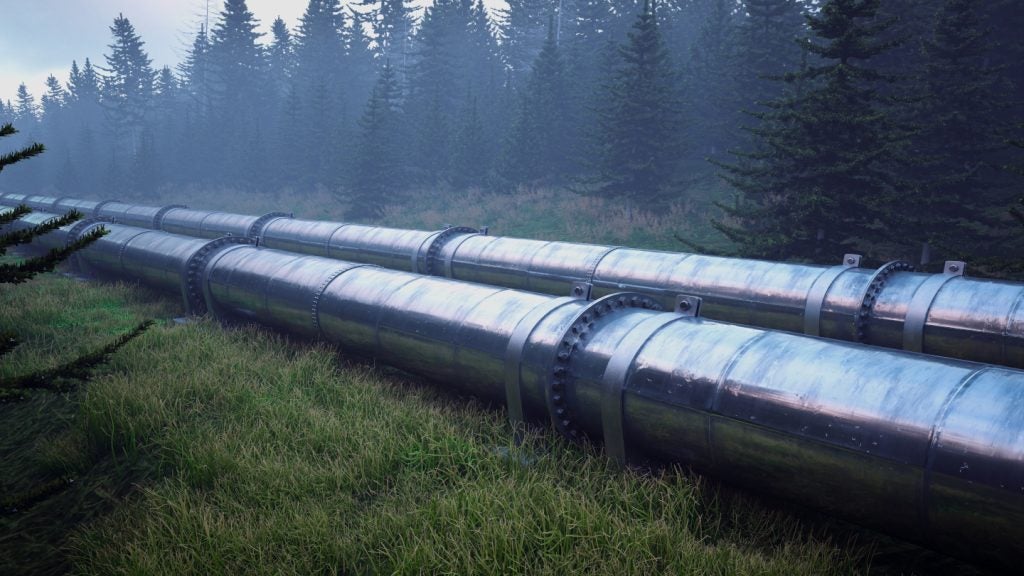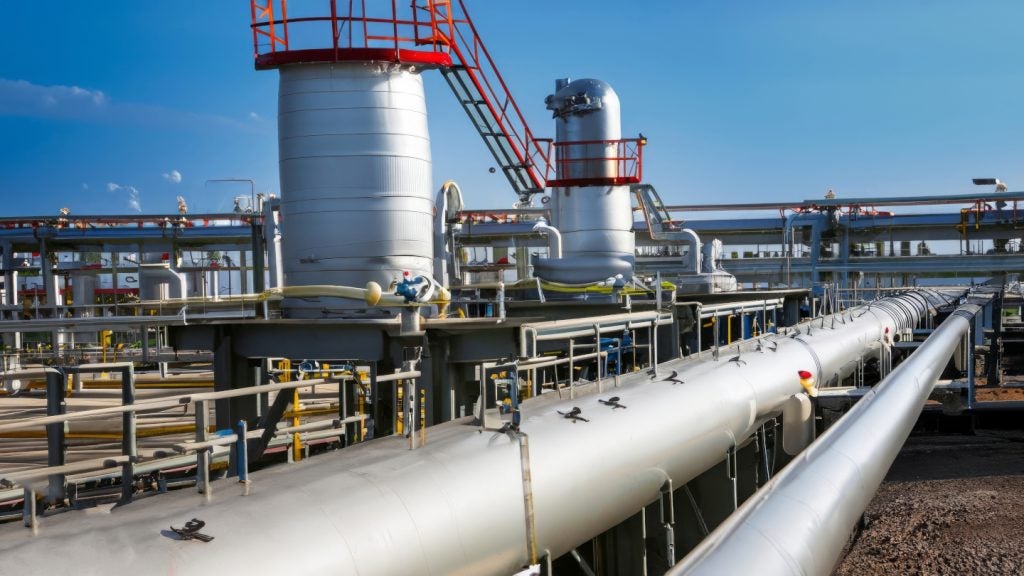With Donald John Trump now the president-elect, he will officially become the 47th US President in a few weeks, and his administration’s energy policies are likely to come under intense scrutiny.
Trump’s first term set the US on the path to becoming the world’s largest oil and gas producer, accounting for almost 15% of output, and with further promises to cut regulations are we about to witness the US turn into a true energy titan?
According to a research note published three days after the election by GlobalData, the parent company of Offshore Technology, Trump’s comprehensive election win will have impacts far beyond upstream development.
While a detailed policy plan still awaits – foreign relations with the EU and Middle East, the relationship with China (the Asian nation has a dominance in critical materials), and the energy transition – Trump’s first term in office is likely to be highly indicative of Trump 2.0.
Tariffs and taxes
First time around, his aim was to unleash growth in the fossil fuel industry: his administration withdrew from the Paris Agreement; rolled back federal environmental and methane regulations; relaxed vehicle emission standards; expanded E&P permits on federal lands; approved controversial pipeline projects through executive orders; and limited individual states’ abilities to block projects on environmental grounds.
According to the GlobalData note, when Trump returns to power, corporate tax cuts will become prominent, and this will “enhance the attractiveness of already profitable assets, and may push final investment decision (FIDs) for certain projects, though volatility in fiscal terms will be a concern.”

It added, however, that given the existing low fiscal take that most oil and gas production are subject to in the US, substantial tax cuts are expected to provide a only a moderate boost to aggregate investment in the sector.
His strong focus on tariffs – mainly to cover the missing fiscal revenue – would likely increase operating costs across the board, with a third of US exports being intermediate goods, or products used in the production of other goods or services.
And on the permitting and regulation front, Trump 2.0 will look to reverse Biden-era bans and environmental red tape. Biden suspended new oil and gas leases on federal land, hoping to reduce emissions and meet climate goals. Trump has been vocal about his firm commitment to the oil and gas industry, which is likely to result in policy reversals.

The note also revealed that Trump “will push for renewed fracking and shale drilling to drive up production and look to exceed pre-pandemic levels.” And there are already reports that Alaska’s Arctic National Wildlife Refuge would be opened for exploration and production activities.
The topic of fracking was introduced by Trump during the campaign, with allegations that Harris supported a ban – an unpopular stance in Pennsylvania, a battleground state with considerable electoral votes (which eventually pushed Trump over the line), where fracking revolutionised the natural gas frontier, and helps powers 60% of the state’s electricity.
However, neither of them supported a ban.
In fact, there is legal debate as to whether the federal government could even try to enforce a national ban. Trump’s policies will not focus on fracking, as it’s a state-level regulated activity, but loosening environmental reviews may indirectly favour the approval of fracking projects.
Built on the likely revival of Trump 1.0 policies, GlobalData has proposed different scenarios for upstream investment, based on the compound annual growth rate (CAGR) between 2016 and 2019.
The high-case mimics growth under Trump 1.0 – but is deemed unlikely, given the share of growth that was attributable to the bounce-back from the oil price crash and underlying market forces.
The low case sees a combination of Trump 1.0 CAGR and the forecast based on currently approved FIDs – which likely underestimates real investment momentum. The base case expects upstream capex to reach $225bn at the end of 2027, up from around $180bn in 2024.
Surging oil and gas production
The note highlighted however that a “supportive set of policies and fiscal framework for the upstream industry, since the turn of the century, has been a bi-partisan agreement, despite notable differences in rhetoric. This underlying trend is what caused the US to gain incredible leverage in the global energy trade.”
Having increased oil and gas production from 17.7 million barrels of oil equivalent per day (mmboed) in 2010, to 37mmboed in 2024, the US was able to sharply decrease its reliance on Middle Eastern oil, cutting imports by 25% in the last 20 years, and to seize the opportunity, following Russia’s invasion of Ukraine, to become a top supplier of gas to Europe, and in the process, become the world’s largest LNG exporter.

US-Europe relations may suffer from diplomatic turbulence. Dwindling support for NATO, and unlikely easing of protectionist policies, will potentially be counterbalanced by the US’s willingness to sell LNG to Europe – and Europe’s demand for it – supporting the need for good relations.
European countries may find themselves under increased pressure to reduce overall gas demand, turning to renewables at a quicker pace to avoid being subject to the leverage of an administration that will be – at least partially – at odds with the EU’s stance on Russia-Ukraine conflict resolution, and increasingly, on Israel-Palestine.
The US, after managing to decouple from OPEC and Persian Gulf reliance, faces a completely different landscape than what it did 20 years ago. As a result, the country has been able to re-evaluate military and strategic priorities in the region, and prioritize focus and resources on China.
Trump’s energy agenda
Trump’s trade war and diplomatic rifts with China, a rising super-power, will dominate the energy agenda, on three main fronts: First, the threat of tariffs, being that Chinese materials and equipment are important for O&G operations, will not go down well with industry leaders.
Second, China is attempting to reduce reliance on energy exports from the US, which soared in the last decade. From zero in 2015, the US is now expected to export over 200 billion cubic feet of LNG to China in 2024, having peaked exports in 2021.
Third, China has effective control over critical minerals and manufacturing of energy-related equipment and infrastructure, which poses a significant challenge for the US, particularly in the context of transitioning to clean energy.
The supply chain vulnerabilities have been spotted: solar PV and wind-powered electricity generation requires the kind of critical materials which China overwhelmingly dominates. Trump’s solution to this conundrum will likely look radically different from anything Kamala Harris had planned, and his predecessor.
The options of safeguarding a good relationship with China to avoid supply chain disruptions and price-controls, and of establishing strong strategic partnerships with other key suppliers, will seem less enticing to him, said the note. Trump’s practical approach means that renewables investments may decrease in response to uncertainty and lack of government support, thereby reducing exposure to this geopolitical risk.
Trump’s climate views
Francesca Gregory, Senior Energy Transition Analyst at GlobalData, said the Biden Administration was “unprecedented in terms of its allocation of federal funding to low-carbon technologies, with the 2021 Infrastructure, Investment and Jobs Act (IIJA) attributing over $9bn to low-carbon hydrogen development and $12bn to carbon management, focusing on CO2 storage and direct capture.”
Fast forward to today, she added, and the US’s energy transition prospects are uncertain, with the incoming president “making no secret of his disapproval of the various funding packages for low-carbon technologies put forward by the Biden Administration, dubbing spending on renewable energy projects as a ‘green scam’.”
While some of the narrative can be attributed to “campaign trail rhetoric, Trump’s stance has raised concerns surrounding the potential for the repeal of incentives such as tax credits, which will pose a significant challenge to emerging low-carbon technologies such as hydrogen and CCUS.”
The president-elect’s administration may also experience pushback from its Republican stronghold states, added Gregory. The American Petroleum Institute, a major Republican party donor, signalled the difficulty of wheeling back the tax credits offered to hydrogen and CCUS in a Trump victory scenario as early as March 2024, citing their popularity within Republican-led states.
This tallies with GlobalData’s project activity trends, with Texas leading in terms of its share of US project volume across CCUS (21%) and hydrogen (19%).
“It is significant that Trump’s previous tenure triggered a removal of the country from the landmark Paris Agreement. If history were to repeat itself “this would represent a significant blow to the US’ progress towards its energy transition.” There are no doubts Trump favours domestic energy production competitiveness ahead of global climate commitments.

CREDIT: Olivier Douliery-Pool via Getty Images.
This likely shift in US policy also impacts global climate governance, as US climate leadership pushes other major economies toward emission reduction commitments and supports developing countries in their green transitions. The emphasis on renewable energy also fosters alliances with nations that prioritise climate action, such as the EU, Canada and Japan – relations which could be strained as a result of the shift.
An assessment by GlobalData analysts indicated Trump’s policies will keep the US “on its decades-old path of energy independence [and by] continuous boosting of domestic production of oil and gas, along with rolling back restrictions, his administration would aim to upkeep its energy dominance on the global stage.”
However, energy independence is not merely based on production, added GlobalData. It also includes supply chain resilience, refining capacity, and wider energy security partnerships.
“An interesting challenge for Trump will be his manifesto to the electorate,” said GlobalData. “His campaign was centered upon phrases such as ‘Drill Baby Drill’. This approach is interpreted by the people to be translated into lower energy bills, and lower prices at fuel pumps for vehicles. It is these metrics that will hold him accountable, politically, at the end of his term.”
Inflation Reduction Act
Despite opposite views on the role of renewables, fossil fuels investment saw a strong growth during the Biden years.
While the outgoing administration prides itself on passing the Inflation Reduction Act (IRA), which included $783bn on renewable energy spending, the US is behind many countries in transitioning to a cleaner energy matrix, having a 1.4 ratio of renewables to fossil fuels investment, while the rest of the world is at 1.8. This gap is only likely to widen in the next four years.
Trump’s threats to repeal IRA green subsidies, however, may face staunch opposition from beneficiary states and industries – enough to put this promise on the shelf. The competitiveness of the clean technologies market in the US (propelled by innovation and subsidies) has such momentum that it can successfully bargain to maintain favourable tax conditions.
The stakes are high, and the whole world will be watching closely, as the details of Trump’s energy agenda become clearer.
Certainly, while the exact fossil fuels and renewables mix will be impacted by the election, energy dominance and its strategic value will continue to shape US policy and drive energy production upwards – both “clean” and “dirty”.
















